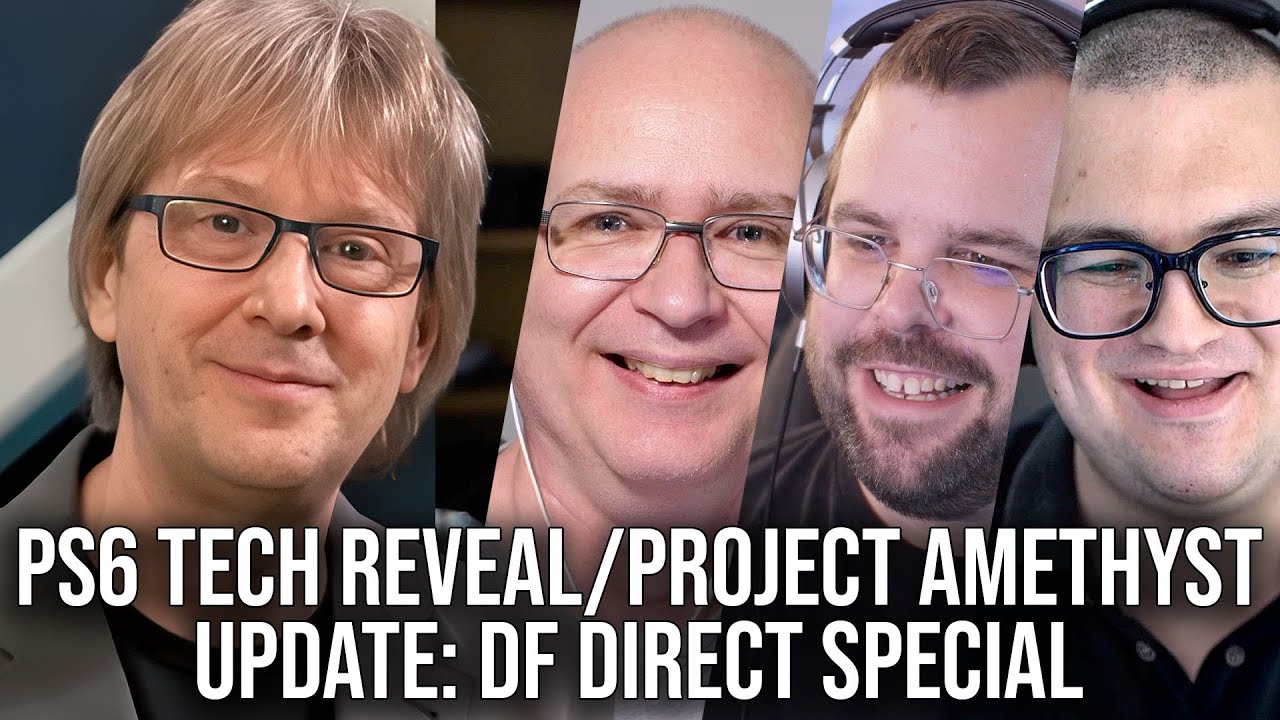The video reveals Sony and AMD’s Project Amethyst advancements, highlighting new hardware features like neural arrays for efficient machine learning, radiance cores for ray tracing, and universal compression to enhance GPU bandwidth, all aimed at boosting next-generation PlayStation performance and scalability. Mark Cerny and AMD emphasize these technologies’ broader impact across gaming platforms, anticipating a future of improved graphics fidelity and machine learning integration while acknowledging challenges in development and cross-generation compatibility.
The video discusses a surprise update on Sony and AMD’s Project Amethyst, revealing next-generation PlayStation technology developments. Mark Cerny and AMD’s Jack Huin presented new hardware features including neural arrays for enhanced machine learning, radiance cores dedicated to unified light transport (similar to Nvidia’s RT cores), and universal compression aimed at improving GPU bandwidth efficiency. These innovations reflect a multifaceted approach to advancing graphics and machine learning capabilities, with an emphasis on better scaling for future games and addressing current limitations in memory bandwidth growth.
The neural arrays represent a novel way of coordinating compute units to accelerate machine learning tasks efficiently, differing from Nvidia’s tensor cores by focusing on area efficiency and potentially enabling larger models and tiles. Radiance cores introduce dedicated hardware for ray tracing, marking AMD’s first foray into such technology, likely to be integrated into the next PlayStation console. Universal compression is highlighted as a key technology to overcome the slow scaling of memory bandwidth in next-generation GPUs by compressing data before it reaches memory, potentially boosting performance without the costly addition of wider memory interfaces.
Both hosts emphasize that these advancements are not isolated to PlayStation consoles but are part of a broader AMD roadmap that will benefit PCs and other gaming platforms, promoting a unified development environment. Mark Cerny confirms that while rasterization performance remains important, the real leap forward will come from improvements in ray tracing and machine learning, which have been challenging to implement efficiently in current hardware. The universal compression technology, in particular, is expected to synergize well with machine learning techniques like FSR and PSSR, although its full impact will depend on how developers adopt and integrate it into their engines.
The conversation also touches on the implications of these technologies for the console lifecycle and game development. With next-generation hardware possibly arriving around 2027-2029, there may be an extended cross-generation period where developers must balance advanced features with backward compatibility. This could lead to longer development cycles and increased costs as games implement fallback solutions for older hardware. However, the hosts are optimistic that Sony’s unique position with exclusive titles and strong hardware collaboration with AMD could accelerate the adoption of these new features and deliver significant improvements in game fidelity and performance.
Finally, the video reflects on the broader significance of this update, comparing it to the excitement generated by the Cell processor announcement for PS3. Unlike the Cell’s niche usage, Project Amethyst represents a collaborative, industry-wide effort to standardize next-generation graphics and machine learning capabilities across platforms. Both hosts express enthusiasm for the transparency and early insights into this technology, seeing it as a positive step toward a more innovative and efficient future for gaming hardware. They also note that the current PS5 generation is running exceptionally well, setting a strong foundation for these upcoming advancements.
